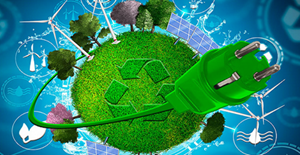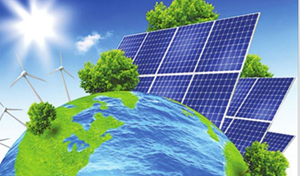Introduction: As the world marches towards a more sustainable future, the energy landscape continues to evolve rapidly. The year 2024 promises to be pivotal in the realm of new energy, with emerging trends reshaping the way we produce, distribute, and consume power. In this blog post, we'll delve into some of the key trends expected to define the new energy sector in 2024.

1. Accelerated Growth of Renewable Energy: Renewable energy sources such as solar, wind, and hydroelectric power are expected to experience accelerated growth in 2024. Advances in technology, coupled with declining costs, are making renewables increasingly competitive with fossil fuels. Government incentives and ambitious clean energy targets further drive investment in renewable infrastructure, paving the way for a cleaner and more sustainable energy future.
2. Energy Storage Solutions: Energy storage technologies are poised to play a pivotal role in the integration of renewable energy into the grid. In 2024, we anticipate significant advancements in battery storage systems, including improved efficiency, increased capacity, and longer lifespans. These developments will enhance the reliability and stability of renewable energy sources, enabling smoother integration into existing power grids while supporting the transition to a decentralized energy system.
3. Electrification of Transportation: The electrification of transportation is set to gain momentum in 2024, with electric vehicles (EVs) becoming increasingly mainstream. Technological advancements, coupled with growing environmental awareness and stricter emissions regulations, are driving the adoption of EVs across the globe. Moreover, the expansion of charging infrastructure and the introduction of next-generation batteries are addressing concerns regarding range anxiety, further bolstering the appeal of electric mobility.
4. Decentralization and Microgrids: The decentralization of energy generation and distribution will continue to gather pace in 2024, fueled by advancements in distributed energy resources (DERs) and the proliferation of microgrid solutions. Microgrids, powered by a combination of renewable energy sources and energy storage systems, offer resilience, reliability, and greater energy independence. As communities and businesses seek to enhance their energy security and resilience in the face of climate change and grid disruptions, microgrids are emerging as a viable solution.
5. Hydrogen as a Clean Energy Carrier: Hydrogen is poised to emerge as a key player in the transition to a low-carbon economy. In 2024, we anticipate significant developments in hydrogen production, storage, and utilization technologies. Green hydrogen, produced through electrolysis powered by renewable energy, holds particular promise as a clean energy carrier for sectors such as industry, transportation, and heating. With growing interest and investment in hydrogen infrastructure, 2024 could mark a turning point in the adoption of this versatile energy vector.

Conclusion: The year 2024 is poised to witness significant advancements and transformations in the field of new energy. From the continued expansion of renewable energy to the electrification of transportation and the rise of energy storage solutions, the momentum towards a cleaner, more sustainable energy future is palpable. As stakeholders across industries and governments worldwide embrace these trends, the journey towards a carbon-neutral world accelerates, offering promising opportunities for innovation, investment, and positive environmental impact.